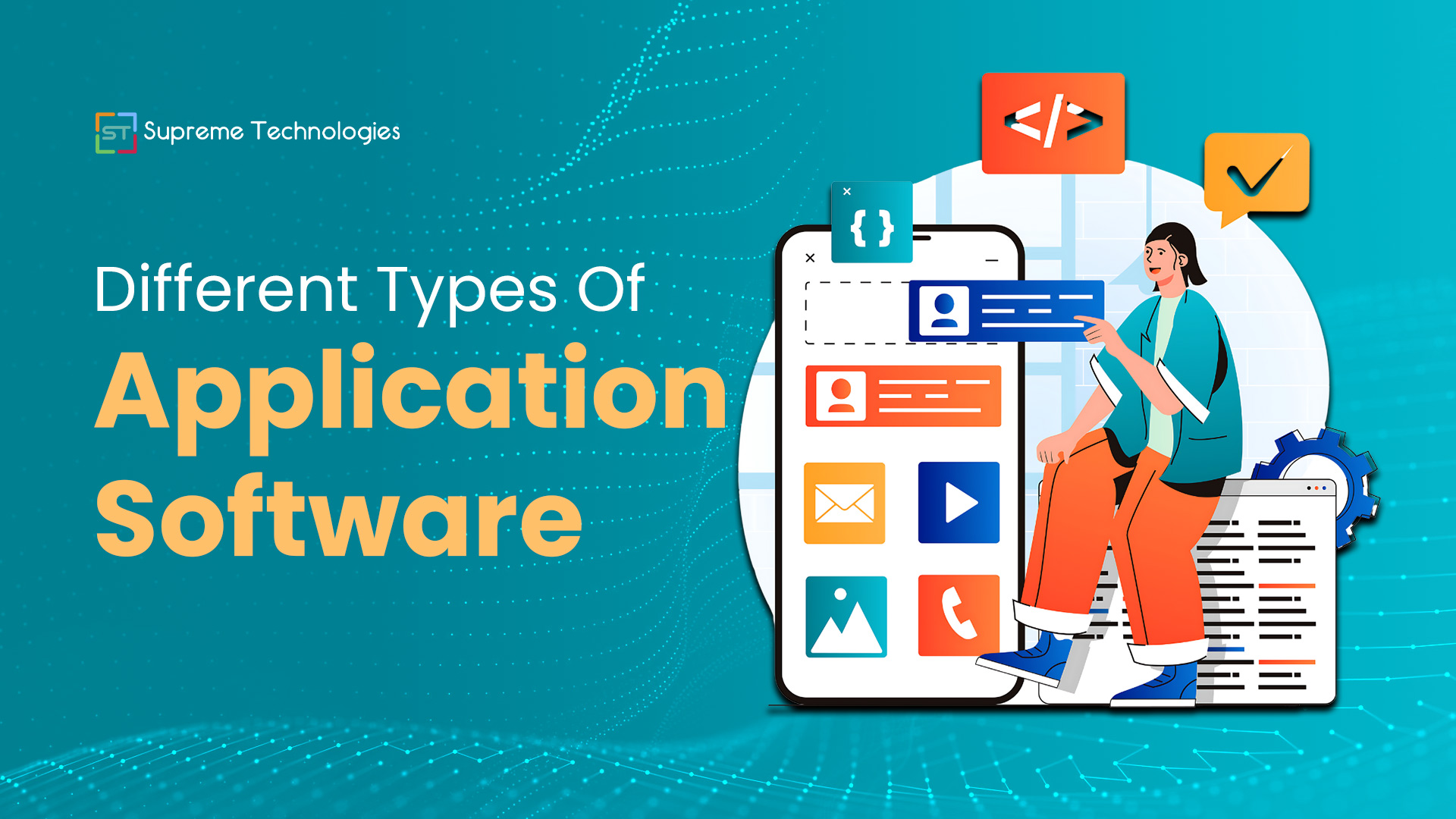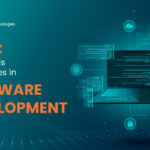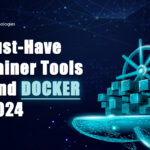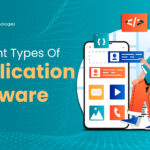Application software offers numerous options tailored to meet diverse needs and objectives. Choosing the right application software can transform operations and drive efficiency and also, positively impact business outcomes.
There are multiple choices in application software. In this blog, we will group them into three different categories: general, business, and custom applications.
Keep reading to learn about them in detail!
| General Applications | Business Applications | Application Based on Shareability |
| Graphics Software | Customer Relationship Management Application Software | Freeware |
| Word Processing Software | Enterprise Resource Planning Application Software | Shareware |
| Web Browsers | Project Management Application Software | Open Source |
| Presentation Software | Business Process Management Application Software | Closed Source |
| Multimedia Software | Business Process Management Application Software | |
| Education and Reference Software | Database | |
| Simulation Software | Resource Management Application Software | |
| Information Worker Software | Productivity Software | |
| Time Management Application Software | ||
| Educational Software |
Understand Application Software
It is a computer program that performs a specific function i.e. educational, business, or personal. It is also known as an end-user program or a productivity program.
In general terms, each application is designed to help users with particular tasks related to productivity, creativity, or communication. this application program aims to simplify operations and assist users in completing their tasks easily
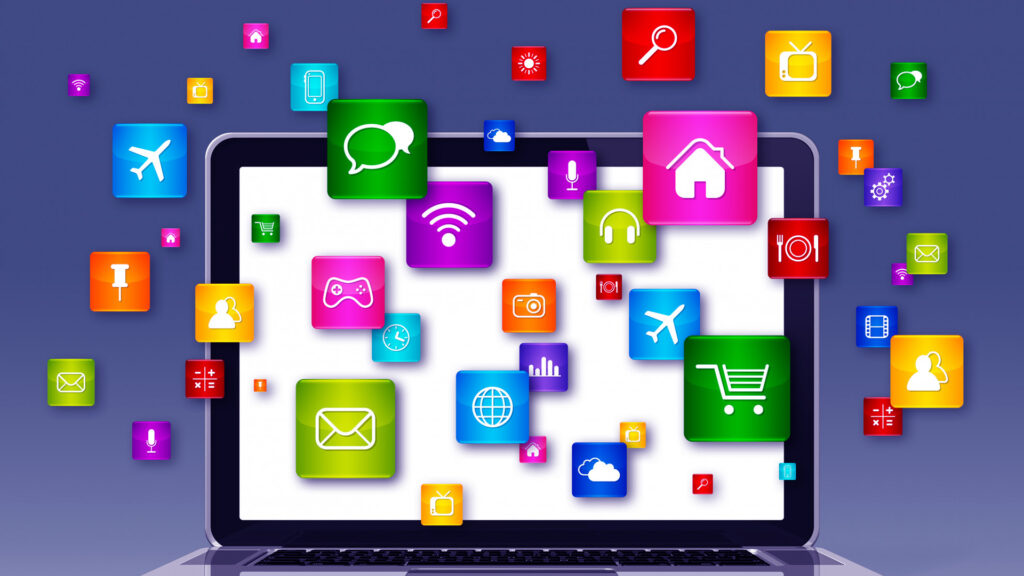
Think about completing your tasks, jotting down notes, doing online research, keeping an account log-in, setting the alarm, playing games, etc., there are varieties of application software programs that can help you. Such as, programs are made to perform specific tasks, simplify workflows, and even enhance team communication. Here are the most common examples of application programs:
- Microsoft products like MS Office, PowerPoint, MS Word, Excel, and Outlook.
- Internet browsers like Chrome, Safari, etc.
- Graphics and Design Software like Adobe Photoshop, Canva, and AutoCAD.
- Online communication tools such as Skype, Hangouts, Zoom, and WhatsApp.
- Project Management Software like Asana, Slack, Teams, Forecast, etc.
Things to Consider In an Application Software
Additionally, there are many application software available in the market today, some come with pre-built features you can customize. However, sometimes, you can build a new application with your desired features. It is a fact that no application software is the same, Many perform best and others are completely at worst. This is why you should ensure that the software meets all your requirements and is useful.
Now, the question is how to know the right application software. Here we will help you how to choose:
Performance
The software should be fast, and error-free in both function and interface.
User Experience
A better user interface (UI) for users to navigate reality and smoothly, use the features of the application.
Security
This one is a must. Ensure the confidentiality, authentication, and integrity of user data and lower the risk of external attacks.
Accessibility
The application software should be compatible with the operating system and easily accessible to the widest range of users.
Scalability
Software should be able to manage increasing and decreasing volumes of data operations, transactions, and all the services
Customer Support
Better customer service to proactively engage them and troubleshoot all the user queries.
What are the Functions of Application Software?
In general terms, Application software programs are designed to execute a large variety of functions. The functions usually vary depending on the user’s needs. Below are a couple of examples of the functions of application software:
- Document Manager
- Data analysis and information management
- Graphics, animations, and video development
- Business project management
- Project Management
- Emails, text messaging, audio and video conferencing
- LMS and learning software
System Software and Application Software – Know the Difference
SYSTEM SOFTWARE
- It controls and handles the hardware and other resources of the system.
The operating system pre-installs the system software. - This is also known as general-purpose software.
- System software acts as a platform and runs in the background.
- Users are not able to interact with the system software.
- A system must function.
- This software can run independently.
- Examples of system software are compiler, debugger, driver, assemble, and more.
APPLICATION SOFTWARE
It completes tasks for a specific purpose as per user requests. Users can easily download and install application software, which is third-party software, according to their requirements. - It can’t run independently.
- The system software provides the platform and hosts it.
- People refer to it as specific-purpose software.
- Application software runs in the foreground and performs tasks based on user requests.
- Users can easily interact with such types of software.
- Examples of system software are word processors, web browsers, media players, photoshop, etc.
Types of Application Software
In this digital era, every sphere of business needs application software. The use of the software is rampant across every domain such as banking, education, healthcare, retail, travel, etc. Opting for the right application software for your particular requirements enhances function and efficiency. Knowing the different types of software will help you save costs, time, and resources, enhance productivity, and improve decision-making. Also, application software can be broadly classified into three categories – General Applications, Business Applications, and Custom Developed Applications.
General Application Software
- Word Processing Software
- Multimedia Software
- Graphic Software
- Spreadsheet Software
- Education and Reference Software
- Presentation Software
- Web Browsers
- Simulation Software
- Content Access Software
- Information Worker Software
Here’s an attempt to clarify a few application software from the list:
Word Processing Software
This is used to format and manipulate text, thus helping in creating memos, faxes, letters, documents, etc. Word processing software is also used to format and beautify the text. It offers multiple features including thesaurus, antonyms, synonyms, etc.
Graphics Software
This application edits or makes necessary changes to visual data or pictures. It also includes illustrations and picture editor software. Canva and Adobe Photoshop are the best examples of graphic software.
Spreadsheet Software
Spreadsheet software is mainly used to perform calculations – As so far, this application stores data in a tabular format in rows and columns. Well, the intersecting cells are separated to define text, date, time, and number fields. It enables users to do several calculations and functions using different formulas.
Presentation software
This software enables you to put your thoughts and ideas in a piece of visual information. Then, it lets you display the information in the form of slides, adding text, images, graphs, and videos to make your presentation more informative.
Web Browsers
It is used to browse the internet for locating and retrieving data across the web. Browser software enables you to watch videos, download images, read files, etc. The most popular web browsers are Google Chrome and Firefox.
Education and Reference Software
This is also known as academic software as they are designed to facilitate learning a particular subject. This kind of software is advantageous in the education industry. Google Earth and NASA World Wind are some examples of educational software.
Simulation Software
This kind of software is used in military engineering, machinery testing, industrial training, robotics, weather forecasting, and many others. It replicates life-like conditions when the actual system or physical environment can be hazardous or inaccurate. It is a program that lets you study or observe an operation or phenomenon via simulation without actually doing that operation. Augmented Reality and Virtual Reality technologies are also used to build software that supports simulations. MATLAB is the best example of this type of software.
Business Application Software
Business application software fulfills specific business functions and operations. Some applications are expected to enhance the accuracy and efficiency of operations, boost productivity, and increase the profitability of a business. These application software that is commonly used by businesses are:
Customer Relationship Management (CRM)
CRM application software administers an organization’s interactions with customers by backing all the necessary data/ information. Also, this software helps provide a seamless customer experience. It derives valuable insights by collecting, analyzing, and strategizing customer data across different touchpoints, salesforce, Zoho CRM, and Netsuite are a few examples of CRM applications.
Enterprise Resource Planning (ERP)
This application focuses on handling all the core operations and other business processes in an organization. It helps in automating and simplifying business operations such as accounting, procurement, risk management, compliance, etc. Odoo, Oracle, and Microsoft Dynamics are examples of this application software.
Project Management
The software function is a multifunctional tool that assists in project planning, resource allocation, and scheduling. It serves as a platform to facilitate communication and collaboration among project stakeholders. Additionally, it allows users to manage costs and budgets, documentation, and generate reports. Some common examples of such applications are Trello, Zoho Projects, Basecamps, etc.
Business Process Management Software
This application software is an automation tool that helps in optimizing business processes. However, It gives an overview of the business operations and helps with crucial errors, inefficiencies, and miscommunications. Zoho Creator, and Nintex, are a few examples of business process management software.
Database
This is also known as DBMS (Database Management System), used to create and manage databases. This software helps to organize an agency’s important data in a database by storing, modifying, and searching for information. Some common examples of databases are MySQL, Microsoft SQL Server, PostgreSQL, MongoDB, etc.
Resource Management
Resource Management Application Software helps allocate and assign people to projects based on their requirements. It also ensures the smooth management of different projects. Well-known resource management applications are Mavenlink. Monday.com, Forecast, etc.
Productivity Software
This software helps companies to boost their overall productivity. It helps users complete their tasks more efficiently and in a better way. These programs offer users a smart and quick way to track time, document creation, or collaboration. All the types of application software such as database management, project management, content management, etc., are called productivity software. Word processing, spreadsheets, and PowerPoint are some examples.
Time Management
This also helps your workforce stay productive by giving all the necessary assistance to manage their time effectively. It allows the team to stay more organized, and keep track of their time spent on projects. Asana, ClickTime, and DeskTime are some examples of this application.
Educational Software
The software that meets all the educational requirements is known as educational software. It facilitates simple teaching and learning of new concepts and content. Plus, educational software promotes personalized and collaborative interactions for students and tutors alike. It involves features such as content creation, sharing lesson details, managing classrooms, and many more. TalentLMS, Skill Lake, and Google Classroom are a few examples of this software.
Custom Development Application Software
A custom software development application built for some specific agencies or users as per their business requirements. Custom software development in the web and mobile apps industry has taken center stage – mainly for its flexibility and productivity.
It can perform your desired functionality and be designed and developed based on user or organizational needs. While pre-built apps are suitable for limited functionality. Well, these software can be classified based on their shareability and availability. Some of them are:
Freeware
As its name suggests, it is available free of cost. Users can easily download freeware software from the internet and use it without any charge. However, this software cannot be edited or personalized to one’s needs. Adobe PDF, and Google Chrome, are good examples of freeware applications.
Shareware
This software is also provided to users for free on a trial basis, typically with a limited-time offer. After the trial period, users must pay if they wish to continue using the software. Some examples of shareware include SnapTouch, Adobe Acrobat, and WinZip.
Open Source
Open source software is now available for free on the internet along with the source code. Also, It enables users to modify the software, remove errors, and add features as per their needs. This comes in free or paid versions, Moodle and Apache Web Server are some examples of this application software.
Closed Source
The majority of the application software we use falls into this category. Developers typically charge for these and hold intellectual property rights or patents over the source code. They usually come with restrictions on use such as Adobe Flash Player, WinRAR, and macOS are a few examples of this type of software.
Conclusion
Application software plays a vital role in our daily lives and business operations. From general programs like word processors and web browsers to specialized business tools and custom-built solutions, there’s a wide range of options to choose from. When selecting application software, it’s important to consider factors like performance, user experience, security, and scalability. By choosing the right software for your needs, you can improve productivity, streamline tasks, and achieve better results in both personal and professional settings.
Learn more about our blogs to elevate your online business.

